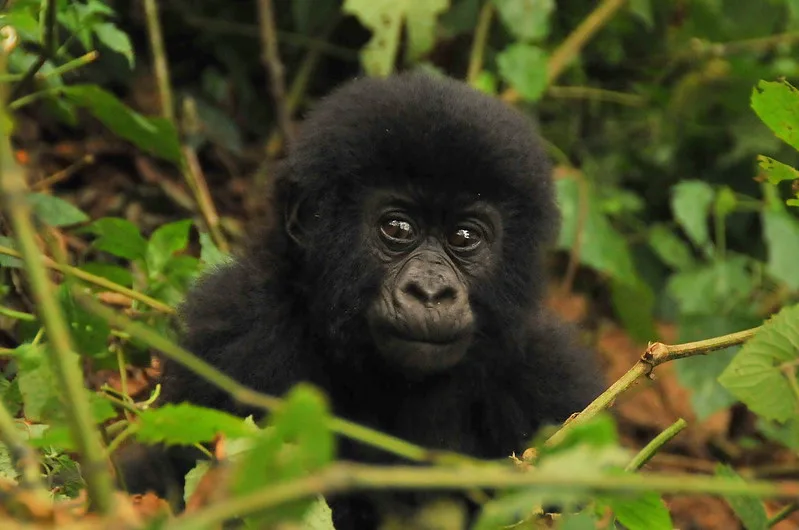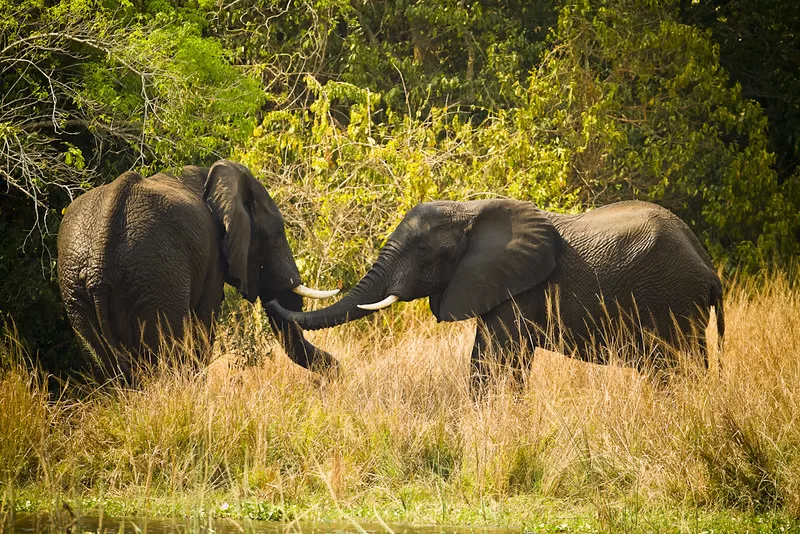MOUNTAIN GORILLAS are not yet vocal.
Mountains Gorillas are not yet vocal. Their flatulent by result of their vegetarian diet is their most often heard sound. Supported by maybe fifteen different vocalization, actions and body language are very important in gorilla communication. Most of these vocalizations seem to have well defined purposes and are quite short.
Gorillas and human observers make subtle rumbling sounds—belch vocalizations unlike their name—to signal one other’s presence. Deep from the chest, staccato barks from coughing grunts heated with annoyance. A wraagh is a protracted loud vocalization more akin to a roar from extreme rage. Singing, on the other hand, is rather different.
Group 5 would sing every several months more often during dry conditions. Usually at a place when the whole family was eating enough of premium food, one person would make a deep rumbling sound breathing heavily in and out in a modulated tone. Usually, this would remain a solo performance lasting little more than a minute.

Others would join in bringing gender and age specific basses baritones, tenors and sopranos to the mix. For a gorilla Gregorian chant at the Virunga cathedral, the outcome was a chorus of entwined melodies rising and falling in a natural cadence that may last several minutes. These outstanding performances surely had some other purpose, but we decided to appreciate them as unbridled displays of group harmony and personal enjoyment.
In Rwanda, privacy is not a concept. Everywhere we left the park, mothers were working their fields or kids were caring for animals. Any way one traveled passed a consistent flow of people. Should we find solace behind some bushes, the gaze of inquisitive young people would show themselves on the other side.
Not concentrated in the cities, people were dispersed all across the nation. Together in 1978, Kigali Ruhengeri, Gisenyi, Butare, and Cyangugu had fewer than 600,000 inhabitants.The remaining 4.6 million Rwandans lived in a distinctly scattered settlement pattern with solitary homes strewn throughout the terrain.
These people’s life practically revolved around what they could cultivate or graze on ever smaller and more scattered areas. Land hunger was strong in an impoverished nation the size of Vermont, and the natural areas there were under danger.
The Hutu ancestors of today arrived in the highlands around the big lakes of East central Africa at least two thousand years ago. There they discovered a pleasant temperature and a patchwork of natural wet hills and rocky mountains.
These Bantu farmers most likely originally settled in what is now Eastern Rwanda along the forest edge as they did during their lengthy trek from the opposite side of the Congo Basin. They started to remove the damp montane forest to reveal its rich soils using both fire and the Iron Age equipment they imported from West Africa.
Maybe just as vital as their iron axes and hoes, the immigrants brought the very nutritious perennial food source—the cultivated banana. The natural woodland gave way to a covering of banana stands interrupted by vast fields of finger millet and peas.
Only in Rwanda was the proto-Hutu alone. Though their low population density and hunter gatherer methods had minimal effect on the terrain, the pygmies preceded them by millennia. They also favored living at the border of a transition zone between two important habitat types abundant in the plants and animals sustaining their way of life.
This was the forest savanna. The Twa probably engaged in bartering with their new neighbors, trading bush meat for food or iron goods, after Bantu farmers arrived. But the Twa were driven higher and higher into the highlands, where they had to adjust to a harsher environment and bountiful food as the forest edge gave way to the banana.
A second major migratory surge poured out of the highlands of North Eastern Africa seven or eight hundred years after the Bantu push eastward throughout central Africa. The migrants now were pastoralists rather than farmers. Among others, they built the unique cow based civilizations of the Fulani, Samburu, Masai, Zulu, and Tutsi as they traveled west and South.
Some of these groups traveled only to the Interlake highlands, where contemporary pollen studies reveal signs of cattle grazing among mountain lakes and marshes by AD 100.Outside of the highest mountains, however, these original Tutsi discovered much of the contemporary Rwanda populated by the Hutu, already arranged into separate kingdoms.
Moving into open natural niches, the Tusti and their livestock avoided running afoul of the Hutu. Tutsi herders were attracted to hilltops and valleys while Hutu farmers had developed sophisticated methods of exploiting the lower, middle, and higher slopes of the hillsides that dominated the Rwandan scene. While other African pastoral tribes had to hunt hundreds of kilometers for seasonal pasture, Rwanda provided much shorter altitudinal migration.
Cattle may graze on grassy hilltops during the lengthy rainy season, then go a few hundred yards down into surrounding valleys to browse in rich wetlands during the dry season. Neither did the Tutsi compete with the established Hutu for excellent land, an ecological separation promoting political cooperation.
The Tutsi established permanently in the area throughout many centuries. Their tall, skinny bodies set them apart from the stocky Hutu and much shorter Twa. Still, the Tutsi made the extraordinary linguistic move of substituting the Bantu language Kinyarwanda for their ancient Nilotic tongue of choice. For Hutu agriculture goods, the Tutsi traded milk and other animal products.
Cattle were allowed to graze on agricultural wastes, leaving dung to nourish the ground in turn. Eventually, these systems rely on and interact in more formal terms between customers and suppliers. Though arrangements were flexible and many Hutu were patrons too, Tutsi were evidently better able to translate their cattle riches into organize clientage connections in their benefit.
By the fifteenth or sixteenth century, the minority Tutsi had negotiated, battled, or manipulated their way into authority over much of Rwanda. Once again, ecology was important as the Tusi could stay in one location and concentrate their power rather than following lengthy and erratic seasonal movement as other pastoral cultures would have done.
A very structured and hierarchical monarchy developed under a series of Tutsi rulers or Mwamis. Aggressively expanding to seize much of current Rwanda, this monarchy combined the manpower and agricultural resources of the Tutsi and Hutu It also formed a sequence of changing alliances with surrounding governments in what are now the countries of Uganda, Congo, Burundi, and Tanzania.


